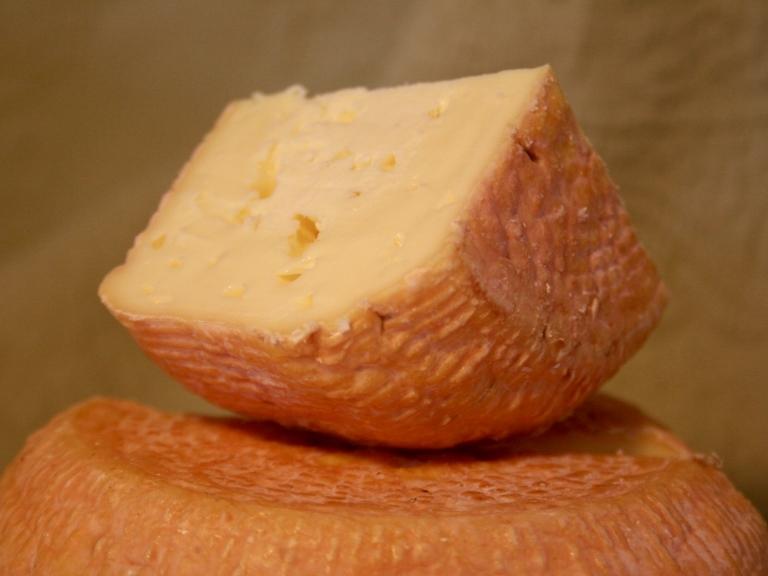Cato Corner Farm- Connecticut At Cato Corner Farm we make raw farmstead cheese by hand from the delicious milk of our 45 Jersey cows. The cows are humanely raised on a pasture-based diet without growth hormones or subtherapeutic antibiotics. We feed a small amount of grain to complement the nutrition in the grass and hay. Our cheeses are our own unique recipes, based on traditional cheese making styles and highlighting the flavor and terroir of our pastures and our farm. Cato Corner Farm is owned and managed by the mother-son team of Elizabeth MacAlister and Mark Gillman. Here’s a bit of their story: Liz MacAlister on Maintaining the Herd and Preserving the Land I began making cheese in 1997. After raising goats and sheep since the 1970s, along with a few cows and chickens, the farm was not self-supporting. I saw cheese as a value-added product that would allow me to keep farming and earn a living. I started with 13 cows, selling cheese at farmers’ markets and a few area stores. We’ve come a long way since then! Since Mark took over the cheese making, I am now in charge of the farm and the herd, as well as managing our NYC farmers’ markets. We are milking 45 cows twice a day, and we have another 40-50 heifers and calves. Our cows are mostly Jerseys, but we have one Brown Swiss and we’ve just started to breed with Normande bulls from France. We have a closed herd, which means we don’t buy cows from other farms – we keep the best of our heifers and sell the rest to other dairies. Mark Gillman on the Milk that Makes Great Cheese I have been back on the farm since 1999. I was teaching 7th grade English in Baltimore when my mom started making cheese. After three years in the classroom, I put my books in the attic and started helping out on the farm and in the cheese room. Now I make cheese and supervise the cheese making and aging processes, I manage the wholesale business, and I take care of the finances. Our cheese starts with our cows and the pastures they graze. If you taste our cheeses throughout the year, you will be able to appreciate the changes that come from changes in the cows’ diet. I love the sweet, grassy flavors and the gorgeous yellow color that the pasture milk brings to our aged cheeses in particular. In the winter we feed local hay, and the cows produce a lower volume of a much richer milk – this makes for a super creamy texture that’s ideal for Hooligan and our other semi-soft cheeses. Cheese making produces a lot of whey – for every 100 pounds of milk, we get only 10-15 pounds of cheese and the remaining 85-90 pounds is whey. We feed our whey back to our milk cows, since it contains protein and many nutrients and is an excellent way to recycle a waste product. The cows love it! Special thanks to our staff for your work! And thank you to our customers for supporting us. We couldn’t make cheese or run our farm without all of you.
21















